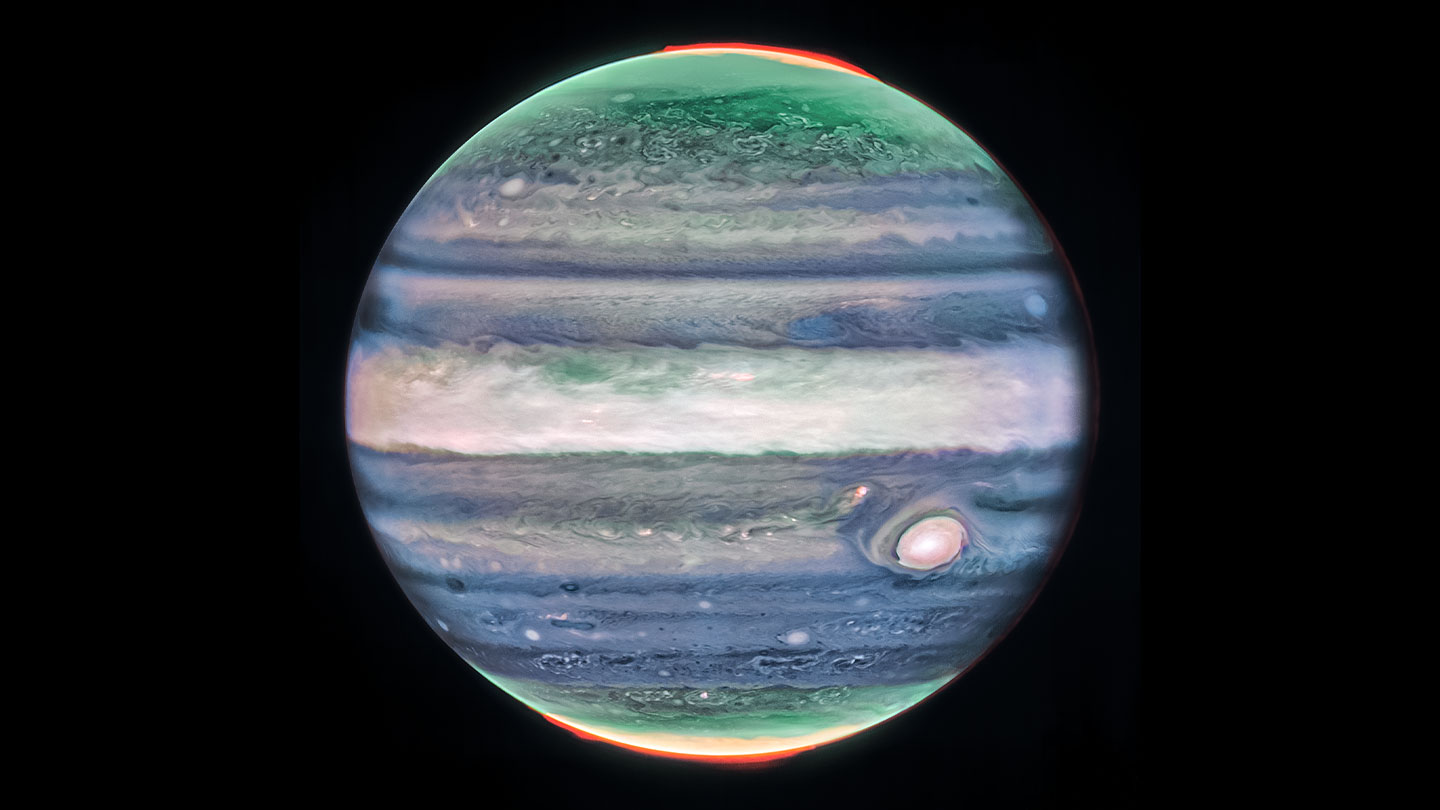JWST spotted a new speedy jet stream in Jupiter’s atmosphere
New beauty shots of Jupiter, captured by the James Webb Space Telescope, reveal a speedy jet stream encircling the equator at an altitude never imaged before.
Researchers have known about Jovian jet streams since Voyager spacecraft flew by in 1979. Those relatively stable winds occur near the planet’s main cloud decks, in the troposphere. The newly spotted jet lies 20 to 40 kilometers above, in the stratosphere, and moves at about 500 kilometers per hour, or roughly twice as fast as the jets below, astrophysicist Ricardo Hueso and colleagues report October 19 in Nature Astronomy.
“We were not expecting to find these strange motions in the equatorial atmosphere,” says Hueso, of the University of the Basque Country in Bilbao, Spain. There is no theory that predicts a change in the winds at this altitude on Jupiter, he says.
It’s not clear yet what causes the speedy jet. “If you have very intense motions, you need energy to produce those motions,” Hueso says. This energy could come from storms below the jet. It may also be linked to happenings higher in the troposphere, where scientists have observed a band where temperature and wind intensity oscillate over four or so years. Similar cycles over the equator also occur on Saturn and Earth.
Earlier observations of Jupiter hadn’t been able to image this part of the stratosphere. Its altitude lies below what ground-based telescopes on Earth glimpse and above what the Hubble Space Telescope captures. But using special infrared filters, JWST was able to peek into this mysterious region.
“Here they have this missing piece of the puzzle for the first time in this latitudinal range around the equator,” says Thibault Cavalié, a planetary scientist at the Laboratoire d’Astrophysique de Bordeaux in France.
The high-resolution images are “stunning,” says Liming Li, a planetary scientist at the University of Houston, also not involved with the study. The researchers used two snapshots of Jupiter taken 10 hours apart. Based on how atmospheric features shifted in that time, the team clocked the stream’s speed.
Future observations of this jet and others could help untangle the tricky physics occurring at planets’ equators, Hueso says. In swiftly turning planets, such as Earth and Jupiter, Coriolis forces steer atmospheric currents to their right in the northern hemisphere and to their left in the south. But at the equator, where there are no Coriolis forces, different factors are at play. With more investigation, researchers hope to refine the equations used to describe the atmosphere around the equator.
“We understand the physics of other latitudes because it’s the same physics that occurs in the atmosphere of the Earth,” Hueso says. But at the equator, “we don’t understand it on the Earth at the level that we would like, and we don’t understand it on Jupiter.”
For all the latest Technology News Click Here
For the latest news and updates, follow us on Google News.

